Olympic Rowing Canoeing Park
Beijing Olympic Water Park, also known as Shunyi Water Park, is located in Chaobai River, Mapo Township, Shunyi District, Beijing. Its building area is 31850 square meters, and the number of seats is 27,000. Construction started in 2005 and completed in 2007. In 2008, the Beijing Olympic Games undertook rowing, canoeing (still water, whirlwind), marathon swimming events.
Traffic information
Public transportation
1. Take bus No. 989 (starting at Sihui) to Shunyi Olympic Water Park South Gate.
2. After getting off at Benmin Street Station, take No. 915 or No. 915 Branch 2 and transfer to No. 989 bus to Shunyi Olympic Water Park South Gate.
Self driving route
1. Beijing departure: drive to Beijing-Chengdu Expressway, exit from Bai Road, turn right at the toll station and go straight to Shunyi Olympic Water Park.
2. Beijing departure: Take the airport expressway to the north of the airport, turn right at Shunping Road, turn left at Rainbow Bridge, and go straight north along the left embankment road to reach Shunyi Olympic Water Park.
3. Beijing departure: Go straight to Jingshun Road, turn right at the Ma Po intersection of Jingshun Road, and then go straight to Shunyi Olympic Water Park.
Architectural history
In December 2005, the Beijing Olympic Water Park began the construction of large-scale earthwork excavation of the track, Hill piling in dynamic water area, main stand and functional room.
In March 2006, 1.1 million cubic meters (55% of the total earthwork) were excavated in the still water area of Beijing Olympic Water Park.
In June 2006, the track excavation was basically completed.
In September 2006, the steel structure of the main stand of Beijing Olympic Water Park has been completed. At the same time, the track has been excavated. The main bridges and supporting functional houses have been completed, and the water storage conditions have been met.
In January 2007, the construction of Beijing Olympic Water Park has been completed, and the water storage has reached 50% of the competition level greening project.
In May 2007, Beijing Olympic Water Park entered the final stage of the project.
On July 28, 2007, the acceptance and delivery ceremony was held in Beijing Olympic Water Park, which became one of the first new venues in Beijing delivered by the Beijing Olympic Games.
Function
The scenery of the games and the idleness after the games are the true portrayal of many Olympic venues. In order to avoid such a situation repeating, Beijing Olympic Water Park as early as the beginning of the design, the use of the post-competition as one of the conditions for assessment. After the Olympic Games, it will become the largest tourism and leisure resort base in the northeast of Beijing, and also the driving force for the development of Shunyi New Town.
In order to solve the problem of utilizing venues after the games, early in the design, designers went to Sydney and Atlanta, which had hosted the Olympic Games. According to international practice, it is easy to make profits after the race. Sydney's hydrodynamic race venue is operated by a company through bidding, and the corresponding fees are paid to the government every year, while the hydrostatic race venue for rowing is usually invested by the local government as a public project. According to the characteristics of dynamic water being profitable and less people in still water, Beijing Olympic Water Park has formulated a policy of combining dynamic water with static water to drive the use of static water after the competition, so that tourists can also participate in some static water projects while playing in the dynamic water area. This idea has contributed to the unique design of the Beijing Olympic Water Park.
Logo culture
The symbols of Beijing Olympic Water Park are drawn with Chinese traditional brush lines, reflecting a strong Chinese cultural heritage. The five colors of the Olympic rings symbolize the perfect combination of ancient oriental civilization and modern Olympic spirit. The logo image is a variant of the rower. It not only has the image characteristics of the rower who rows back to the end, but also has the image characteristics of the canoeist who rows with both hands holding the oars. The blue-green water pattern in the middle highlights the characteristics of the water events. "SHUNYI 2008" also uses sports fonts, highlighting the site and time of the project. The whole composition is dynamic and has a strong sense of motion.
In the composition, the red stripe is a variant of the Chinese phonetic initials "S" of the word "Shun". The yellow stripe and the red stripe constitute the variant of the Chinese phonetic initials "Y" of the word "Yi". At the same time, the three colors of black, red and yellow constitute the Chinese character "Yi". The blue and green stripes below symbolize that Beijing Olympic Water Park and Chaobai River Forest Park are adjacent to each other and set off against each other, forming a new urban background of Shunyi, which is based on rivers, soul of water and rhyme of forests. The progressive and upward water stripes and the character composition of SHUNYI 2008 symbolize the opportunity of Shunyi people to seize the Olympic Games and build a harmonious socialist society and "concentric". On the road of building a well-off society in an all-round way and building a green international port, we should carry forward the spirit of "concentric and upward, scientific innovation, down-to-earth, and pursuit of excellence", and constantly develop and advance and uplift our spiritual outlook.
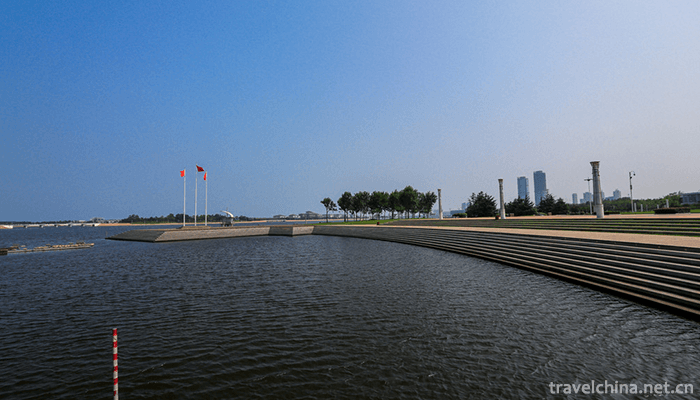


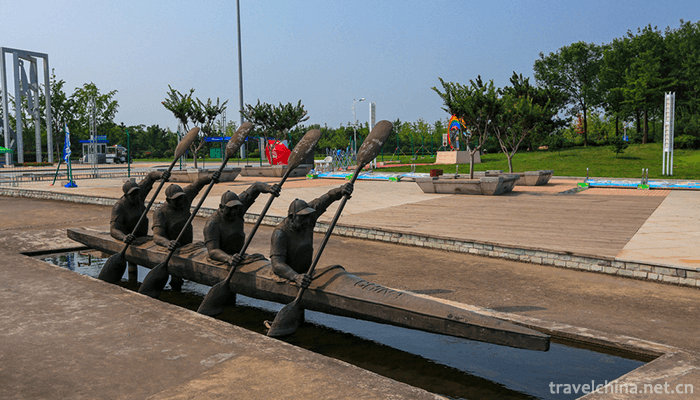

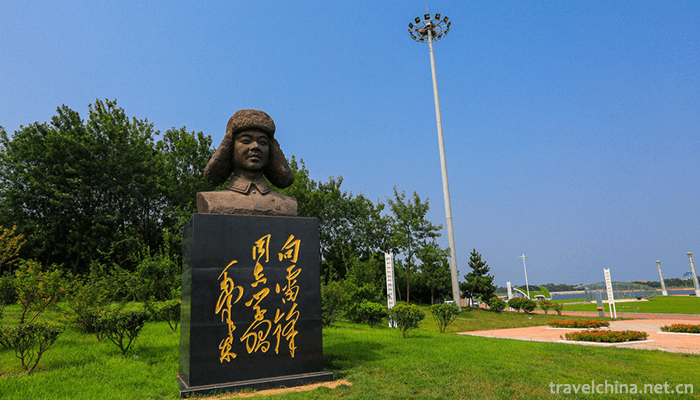
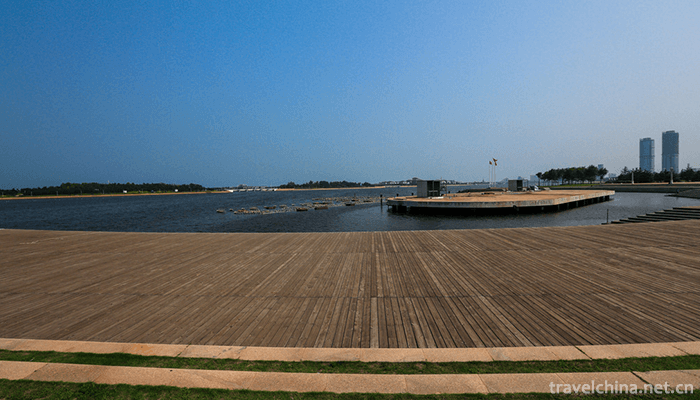
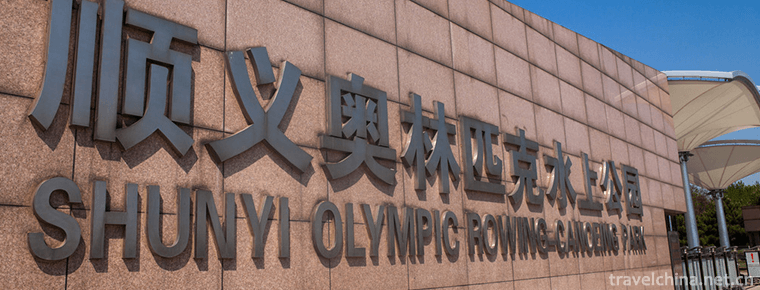
-
1.Shanghai Park Hyatt Hotel
Shanghai Park Hyatt Hotel is an exquisite modern Chinese-style residential hotel, located on the 79th to 93rd floors of Shanghai Global Financial Center, known as the Vertical Comprehensive Urban Area
Time 2018-12-16 -
2.Funiu Mountain Skiing Resort
Located on the north slope of the old boundary ridge of Funiu Mountain in Luanchuan County, Luoyang Funiu Mountain Skiing Resort has the highest elevation of 2200 meters and an elevation of 1700 meter
Time 2018-12-22 -
3.Chengshantou Scenic Spot
Chengshantou Scenic Spot is located at the easternmost end of Chengshan Mountains in Rongcheng City, Shandong Province, so it is named Chengshantou. Chengshantou is 200 meters above sea level
Time 2019-01-05 -
4.Chongli Wanlong Skiing Ground
Wanlong ski resort is located in Honghua Liang, Chongli District, Zhangjiakou City, Hebei Province. It covers an area of more than 30 square kilometers, with the highest elevation of 2110.3 meters and
Time 2019-01-06 -
5.Checkerboard Mesa Qipanshan Mountain
Qipanshan is located in the northeast of Shenyang City, adjacent to Fushun in the east, Hunhe in the west, Tieling in the South and Hadaling in the north. It is located
Time 2019-02-07 -
6.Gudou Hotspring Resort
Xinhui Gudou Hot Spring Resort is located in Gudou Scenic Area, 55 kilometers away from the Capital City, 5 kilometers away from the entrance and exit of Xinhui Cliff South Section of the West Coastal
Time 2019-02-25 -
7.Eight Diagrams Palm
The Eight Diagrams Palm, also known as the Traveling Eight Diagrams Palm and the Eight Diagrams Linked Palm, is a traditional Chinese boxing with the main changes of palm method and walking.
Time 2019-04-02 -
8.Huanglong drama
Huanglong Opera, a local traditional drama in Nong'an County, Jilin Province, is one of the national intangible cultural heritage.
Time 2019-05-04 -
9.Midu folk songs
"Midu Folk Song" is the general name of the Han and minority folk songs in Midu County, Yunnan Province. Midu folk song is a multi-cultural complex system, which is the convergence and cohes
Time 2019-06-04 -
10.Beijing University Of Chemical Technology
Founded in 1958, Beijing University of Chemical Technology, formerly known as Beijing Institute of Chemical Technology, is a high-level university founded by New China for "training advanced chem
Time 2019-09-06 -
11.Donghekou earthquake site park
Donghekou earthquake site park, located in Qingchuan County, Guangyuan City, Sichuan Province, is the first earthquake site protection memorial site of Wenchuan earthquake. On November 12, 2008, the opening ceremony and the launching ceremony of the tourism market after the earthquake were held.
Time 2020-11-08 -
12.Population of Deyang
By the end of 2018, the total number of households in Deyang was 1 million 575 thousand, and the total registered residence population was 3 million 870 thousand. Among them, there were 1 million 242 thousand urban residents and 2 million 629 thousand rural population
Time 2020-12-14